COVID-19 notwithstanding, the luxury sector is set to witness a surge this decade with some fundamental shifts. China is going to become much more important, Europe is going to rebound. This shift will see brands that are committed to exciting the customers flourish. However, while a lot of brands are going to disappear, there will be newer ones too and the strong brands will only go stronger. A global panel of experts talks to Abhay Gupta, Founder-CEO, Luxury Connect, about the trends around reset of the luxury business, new directions in digital fashion, NFT, metaverse and much more.
Abhay Gupta: Despite early apprehensions, Bain Altagamma’s Spring 2021 report reflects the strong rebound of luxury in 2021. What is your opinion/ experience/thought about this? Where do you see luxury heading globally despite the world expecting a third, fourth or fifth wave of covid?
Federica Levato: What we have observed is that the luxury market in Q1, 2021 has already bounced back to the same level of Q1, 2019. So basically, it has gone back to pre-covid levels. This gives us a very good signal on customer behaviour. But there are important shifts in this market in the sense that it has evolved quite a bit in the last 24 months in terms of generations with Gen Z becoming a true target. For luxury brands globally and specifically in Asia and US, the shift to online channels has doubled. In China, the key message is that luxury brands have been able to uplift the game of customer experience which was not obvious just 24 months ago. So we see this market very alive, and we see this customer very willing to buy these products. Of course, there are some categories and some geographies that by nature are slower to recover but in general we believe that for sure by first quarter or at least by first half of 2022 the market will be back to precovid levels.
Armando Branchini: The pandemic impact has been terrible for everybody, the world over, but the luxury sector has always been in a position of reacting quickly probably because every 5-7 years, the sector has to face the entrance of a new generation.
So the supply side and retail side is in a condition to find new ways of engagement, without losing grip with the previous generations. But I would like to recall that in 1983 the number of consumers of luxury goods worldwide was 8.3 million people. In 2019 this population was around 450 million people with an increase of more than 50 times. I consider 1983 as a starting point because it was the beginning of the globalisation phenomenon. The consumption volume in 1983 had been €30 billion and it was €1.25 trillion in the year 2019 which is about €1,250 billion, so more than 40 times growth. And going to the polarisation between the super brands and the regular ones,referred by Federica, if you have a look at the balance sheets of companies of Louis Vuitton or Gucci and you compare their balance sheets of 2018 with the ones of the year 1983, you can see their growth was very much higher than 40 times. So this means that the sector has the ability to grow in spite of a number of crisis like the covid 19. I would like to remember in 1987, the black Monday, in 1997-99, the crisis in Southeast Asia, Russia, in Brazil, in Argentina. Of course in the year 2001, the dotcom bubble and September 11.
In 2003, SARS and the invasion of Iraq. And in 2008-09 the global financial crisis. The luxury sector has always been in a position of entering last in a phase of crisis and being in a position of recovery first compared to all other sectors of the business. So yeah, I’m positive, as Federica has been.
Manoj Adlakha: In many ways 2020 has reset the world’s luxury market. The point has already been made but luxury is often one of the first industries to take a hit in times of crisis and that said it’s also one of the most resilient sectors to come out of it. I believe there is an inflection point with digital luxury meeting physical bespoke experiences and this again is going to be a very interesting phenomenon going forward more and more customers would want lifestyle experiences.
Daniel Langer: I just want to add may be one thought, and it’s a bit of a warning sign because I think we, and I think Federica pointed it out that we have this kind of dual development.
You have these super strong performers right now, some brands going double digits in the first quarter and then you have brands that are in complete collapse. I would say the brands that are not doing so well should not hope for rebound after covid. Because a lot of the issues that these brands are suffering from are kind of homemade issues. They have not connected strongly enough with their customer base, they didn’t excite enough, there’s a huge issue with pricing. Many brands have done crazy amounts of promotions and have weakened their brand equities and during the crisis have maybe overreacted in the last year. These brands are not going to just recover because the market is bouncing back. I think the name of the game in the next couple of months and years is going to be excitement of the customers and really kind of rediscovering,especially for those brands that are not performing so well. Luxury is not just about high prices but first and foremo about the ability to create desire, the ability to create products that customer really want.
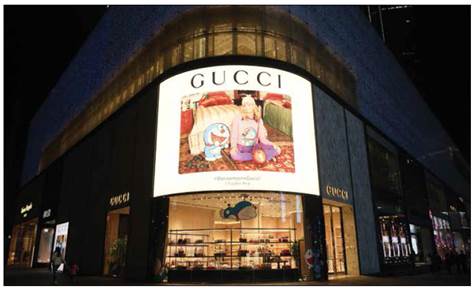
It sounds banal because it should be what everyone is doing but sometimes when companies get busy and do basically their execution, they sometimes tend to forget this and I think that we will see a huge number of brands disappear and I don’t think that this can be neglected. I’m a huge fan of competitive advantage so I personally always think if a brand disappears it’s good because then it probably doesn’t deserve to be there because in the end the customers decide whether they like or do not like a brand. Armando mentioned Louis Vuitton or Gucci, if they are performing extremely well right now this is also because they were extremely well managed during the crisis. Because they understood very fast where the consumers are going, which consumer trends are there, and they were able not only to anticipate those trends but also to be the trendsetters and to excite. And a lot of brands during the last year used more of a “wait and see” approach, maybe played a bit too conservative, and again working a little bit too much on price and promotion rather than exciting. I think that in the next few years especially with Gen Z, as Federica mentioned, we will have aggeneration where the stakes are muchhigher. This generation expects much more from brands, because they are so digitally immersed, they want even more and better physical experiences in the stores and brands will have to find solutions for them. I’m pretty sure that if I analyse the top performing brands at the moment, I would say, to me they all have the ability to excite very strongly digitally and connect very strongly with Gen Z and also in particular with the Chinese customer that, as we know, is more and more important for the luxury industry. Those brands that are lagging behind typically don’t have this ability at the moment. So, I think that there is really a need, especially for those brands that are not performing at the moment, to think in a different way and to almost re-invent themselves. I would say the clock is ticking.
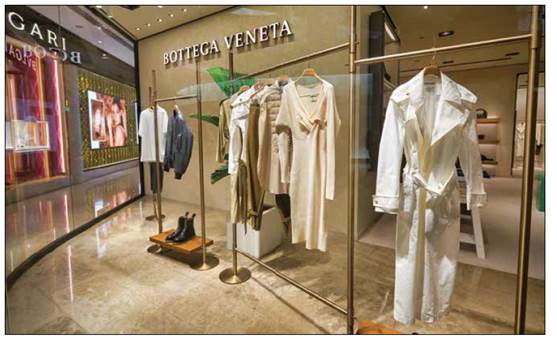
Amrita Banta: We are looking at all the markets globally and we have the trend lens programme that runs in the US, Europe and Asia every 6 months, and especially in the last 2 months data was collected across geographies. So, what I’d like to add is that while generally it is positive, there is a continuum where countries come in. China is looking very optimistic and we have seen a bounce back with the US brands as well. There are some in the middle which are very cautious like Japan, Singapore and Hong Kong which are more tourist related. There are parts of Europe, driven by tourists, which are still cautious and not looking that optimistic across categories. And then you have brands in which different categories are impacted like you have beauty, fashion, wine and alcohol and private banking has seen a huge increase as compared to hospitality. It’s good to point out that overall, it is optimistic. Luxury bounces back much faster than others but at the same time, there are iconic brands doing well and it all depends on the market. Whenever a company needs to look at their strategy, it has to be localised now because every kind of geography is reacting to covid in a different way. So that probably is the way forward.
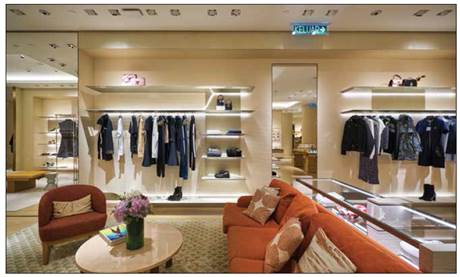
Abhay Gupta: One thing common that has emerged from the discussion so far is that digital is really the way forward. We are relying on 3D, holographic, VR and today we are talking of metaverse. So when we are talking about metaverse kind of a scenario, how do you think a brand remains relevant? I mean a metaverse is a completely intangible aspect of luxury. So where is the world heading?
Amrita Banta: The craftsmanship is the heart of a brand and digital helps to bring that story to life hence accelerating the process of matching the consumer with whatever you are producing. Whether it’s high end luxury or something difficult to craft, I think the digital and tech is just enabling it to come to life, which is what typically all the social media and the connection that craftsmanship can have with the consumers. So I wouldn’t see it as opposing but helping to accelerate the connection.
Abhay Gupta: But then, why does a brand like a Bottega Veneta give up social media? I mean if digital has to be used more for story communication then in the recent past we are all aware that Bottega Veneta took a very conscious decision and it sort of exited from all kinds of digital communication, except its own communication. So how does a brand really remain relevant without being present on social media?
Amrita Banta: I think Bottega is already a very understated brand and the personality is being understated. They still have their website and then they have their followers and fans who are present on other parts of social media, who are kind of like ambassadors of the brand and recommend it. Some people think of this as a way to market the brand and differentiate it from what is happening. I think as a brand they are understated, and the people who would buy them are not so driven by social media. So the personality of the brand and the way of telling their story is more important in terms of how they display their personality.
Abhay Gupta: Do you think going forward that’s going to be a way of brand story telling? I mean if you have examples of cartier or Gucci or Louis Vuitton doing fantastic stories using short form videos and long form videos etc but completely exiting from social media and digital marketing beside the website – is it going to be a trend moving forward or is it reducible?
Daniel Langer: I think again it’s always interesting to see why successful brands are successful and why unsuccessful brands, at the moment unsuccessful. Because it’s always easy to point the finger to the pandemic and so on and as I said earlier there’s a lot of homemade issues.
To me, one of the most striking things is and I want to be a little bit provocative here. Most brands in the luxury industry have no story. It’s striking for me when we do category analysis and so on and look at the 10-20-30 brands that are kind of driving maybe the majority of the revenue within a category. In many categories, except some of the top brands, brands tell exactly the same story and that will not work anymore.
This may have worked five years ago or a decade back, when we had less competition, when the market was also still smaller. Armando pointed out how the market has been growing. If I look right now into any category from cars to fashion, there have never been so many new brands being launched by the upcoming consumer group of Gen Z’s and I think a huge issue that is driving the underperformance of brands is that they don’t have a story. Because I hear too often in categories for example what are the buzzwords right now, everyone talks, for example, about sustainability. I’m a huge advocate of sustainability, but I always find it interesting when you really probe brands that tell me they are the sustainable solution and I ask them what are you precisely doing better than any other brand and there is no answer. In the digital age the main criteria to convince will be: can our brand story in the digital channel or and through digital channels, convince customers and if the answer is no they will simply not buy and this means if my story foundation is not differentiated from brand B and brand C, how can Ieven expect that they will buy me. By 2030 digital will play a much bigger role. Brands would have to win the digital game by content differentiation and by being relevant through brand content. I think that on the content side a lot of brands have massive deficits.
Abhay Gupta: There are statistics to say that the virtual worlds are likely to contribute something like $400 billion by 2025. So I again repeat my observation that the tangible aspect of luxury seems to be completely being taken over by the intangibles of the digital world and targeting the new consumer entering luxury or the let’s say the senior part of the Gen Alpha and the younger part of Gen Z. I mean that’s where the focus seems to be when we talk of metaverse and we talk of digital fashion and where brands like Gucci and LVMH are really betting big. There’s been an example recently where a digital Gucci bag sold at forty two hundred dollars against a physical bag selling at thirty six hundred dollars. So the point is that is this really going to shape up into a huge trend going forward for brands or is it just going to be a fad? Sotheby’s did a weeklong event trying to sell NFTs through auction. Any comment on this?
Federica Levato: Yeah, I think that the digital evolution will not stop. It’s not a fad. It will continue but how it will apply in this industry – the degree of change and the degree of virtual reality that we will see, will vary from brand to brand. I truly believe that the key point here is how really is the connection– how to connect emotionally with the customers. We should exit from the paradigm that digital as a virtual entity is not emotional because during the pandemic, we have experienced how, not only luxury brands but also from other sectors truly authentically and genuinely connected with us and we developed genuine emotions and relationships with brands even though we were at home and connected through a mobile or a computer.
Daniel Langer: Why are people investing so much, and I use the word investing, into categories that a couple of years ago no one would have thought possible. I will give you a couple of examples. Take the sneaker market. If we had this conversation 10 years ago, no one would speak about sneakers and luxury. One would speak about dress shoes and then the sneakers for the weekend and the dress shoe is the $2,000 shoe and the sneakers are the hundred-dollar shoes. If I look now at the top end of sneakers, you pay $10, 15, 20,000 easily, much more expensive than traditional bespoke shoes or traditional classic shoes and I think this is something that companies need to take seriously. This is not a fad or something that is you know going away tomorrow – it’s not going to go away. Why? Because it’s a category that allows much more creativity and when there’s creativity there’s also again more differentiation and you always see when there’s more differentiation, then there is more value creation. The other thing is that this is a category that the new generation is extremely familiar with and this also explains why the trend to digital art is so strong. In luxury we always have to remember what we are really doing is to create something of extreme value for customers and what this is can change. Think about hats. A hundred years ago, 50 years ago, almost everyone was wearing it, it was a huge category. Now most people don’t use a hat, it’s not a very big category. We have to look into the behavioural shifts that are happening. What are the categories that consumers are more drawn to? Another interesting category – the backpack. If we look back to 10 years ago, no luxury brand had a backpack, there was no backpack category. I
actually know the person who introduced the first luxury backpack and he told me that when he went to Harrod’s, Harrod’s refused to launch it because they say this will never be a category that any luxury brand will focus on. Fast forward to four or five years and you can buy a five thousand dollar backpack from Louis Vuitton and from basically any other luxury brand -- it has been in fact the fastest growing segment in the last two or three years! And so we have to embrace the dynamics of a sector that will be dramatically more dynamic than before in many aspects. On one hand we will have a lot of established categories and established players, but at the other hand we will have a lot of new players that are closer to the new customers, that are closer to the market and that experiment and some of these experiments will not work but some will work and those who will work can be breakthroughs. I personally think that the next 10 years will be maybe the most exciting that luxury has ever seen with some of the biggest changes and yet a lot of constants. I’m pretty sure you will still have the same top four-five brands but not the same top ten brands.
Abhay Gupta: In the recent past we have seen the collaboration between LVMH and Richemont for the platform aura. Do you think the future is going to become more collaborative where traditional competitors are going to come together for the benefit of the consumer and more such collaborative efforts using digital technology is going to be the future?
Armando Branchini: I believe that there are areas where companies that are fierce competitors in the market can cooperate, I would say, cooperate to better compete. So I see cooperation as an important factor. In the case of Altagama, cooperate to better compete was our very motto, at the very beginning of this initiative in 1990. So I totally agree on this point. I am positive.
Manoj Adlakha: Partnerships have been probably the way they go. Earlier this year we joined the Tata Cliq Luxury, which is India’s foremost premium online luxury shopping destination. Tata Cliq Luxury has over 300 premium brands on the platform and what we are doing through this partnership or strategic alliance is really offering best in class products, experiences and access; so it’s bespoke shopping experience, white gloved delivery service, access to luxury events, membership of their like buy-invite only privilege programme and more. And it was an early case before the lockdown crisis hit us, but it was very well received by our customer base. It’s a long-term partnership.
Abhay Gupta: One more trend I would like to touch upon which is really growing big now is related to circular economy, sustainable mushroom leather etc. I mean, everyone is talking about it, these things have come centre stage during the covid. Investments are increasing but somehow the reporting is not yet structured. So, how seriously are corporates looking at this because I believe this is the demand of Gen Z?Amrita, would you like to comment on this?
Amrita Banta: Sustainability got accelerated because of the pandemic and we’ve seen now that high net worth people, especially the young, are actually getting into sustainable investments where the return may not be that high for the money invested, but to the point of being able to choose these sustainable investments, it is a trend that has been going up. This is the first time we saw in our data that people across Asia, Europe and US, and it was quite a surprise tosee in some markets in Asia, that people are ready to pay quite a big premium for brands that are focused on sustainability or hotels that are embracing eco friendliness or brands with a purpose.
Abhay Gupta: Now I come to a very specific question to Federica. You’ve been doing this wonderful study with Depop, specifically on Gen Z which says that Gen Z is looking at second hand luxury; they are willing to look at buy now pay later, they’re also looking at probably reusable luxury – so what is really the trend? You know there’s a projection that 10 per cent of revenues by 2030 is going to come from these kind of spaces of rent a luxury-buy now pay later and reusable luxury. Do you think this is really going to be a very serious contributor to overall luxury sales?
Federica Levato: We think so yes, because it’s let’s say staring from Gen Z, but second hand is something that has always existed for some categories like a high end watch or a unique piece of jewellery. The positive trend is that brands are now realising that these could be just additional ways to attract new consumers or attract the usual consumers but in new or different shopping occasions to the universe of the brand. We think this is definitely real and it’s not only let’s say to be focused on the new generation or on entry prices, but these new business models are visible throughout, let’s say high to low from a price perspective. So, from unique products to aspirational products that also show the potential in terms of magnitude of this new business model. What we have observed is that more and more brands are trying to let’s say overcome the third party doing these and running these business models and trying to control more and more. This new business model couldalso be a breakthrough in the industry.
Abhay Gupta: Amrita, coming to you. You have been doing some research in Southeast Asia and you also started doing some work in India. Would you want to compare the Indian Gen Z with rest of the Southeast Asia or rest of the world and say what are the trends that brands who have already entered India should be looking out for?
Amrita Banta: I want to talk about the triple A consumer which somewhat defines the young and millennials across the world, including India. We called the study triple A, because they are Aspiring, Ambitious and Affluent. It’s a commonality we saw in Asian economies including India. Since it is luxury, I would want to talk more about the affluent Indian consumer because that’s what we cover. The study was conducted in March and it gave optimistic results. But it’s a pity that India went into a lockdown in April. There was a positive outlook from the study about the rebound and spending, and that they love to travel. I often talk about the Indian millennials because the number is similar to China, like 300-400 million which is a big number. In Southeast Asia, the average age is 33.So, the young consumer is very keen on luxury. Couple of things about the Indian consumer that came up are that they are not very different because they travel abroad for work or study. They are the first to embrace foreign luxury brands. Jewellery brands such as Cartier, Tiffany and others have this issue on how to crack India, because traditionally Indians don’t buy jewellery from these kinds of brands but from Indian brands. So usually these young consumers who are exposed to these brands introduce them to their parents. That is a big opportunity for luxury brands in terms of focusing on the youth. The young Indian consumer is no different than its counterpart in SE Asia. Very ambitious, wanting to travel, wanting to achieve.
Abhay Gupta: We’ve been talking of a lot of changes in the last decade, especially in the last two years even as covid raged on. Would you say the pace of change that is happening now is supersonic and this space is going to continue this way because you know, they say, the attention span of Gen Z is now coming down to seven or eight seconds! Will luxury be able to cope up with this pace of change as quickly as Gen Z blinks its eyelids?
Armando Branching: Of course, I totally believe it, and generally speaking, I believe that physical is going to be as positively impactful on luxury. A very good point is that as soon as the tourist flow recovers on an international scale, we will not have cannibalisation, as I believe that when people have the opportunity of going abroad, they will have either the opportunity or both the opportunity of shopping locally in Europe or in the US or elsewhere. They will be in a position to even buy more on the digital channel So definitely I am very positive. I believe that 2022 will be a very spectacular year worldwide.





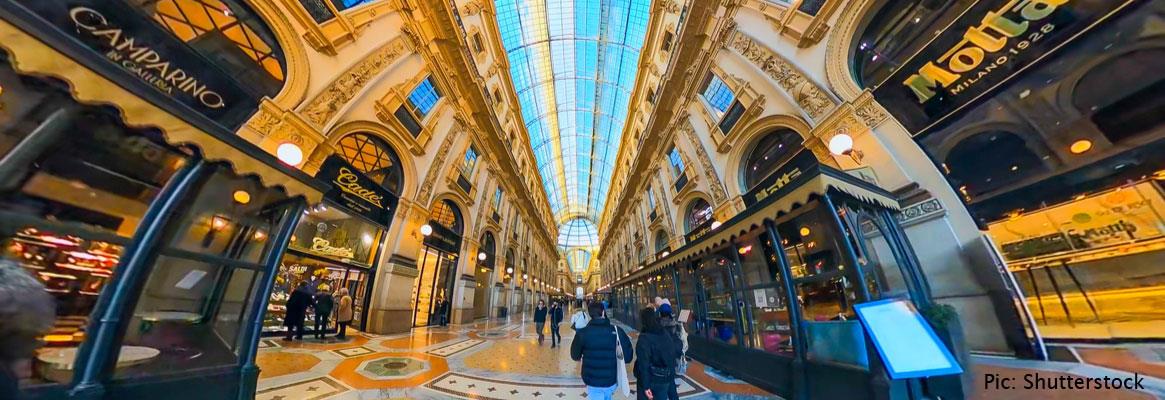
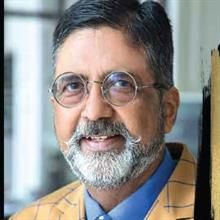




Comments